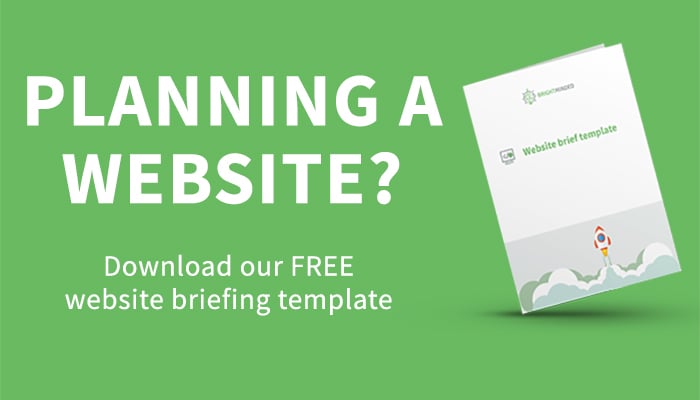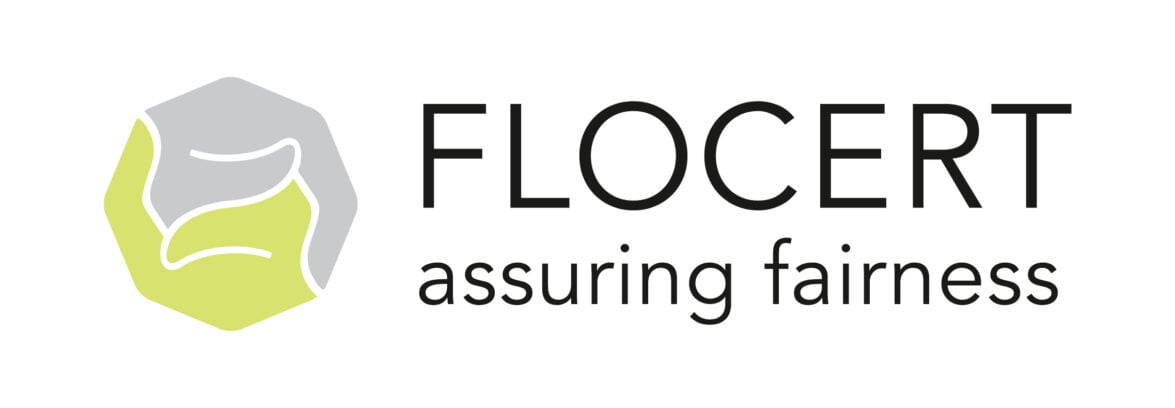How to migrate a website to WordPress
Moving to a new website can be an exciting yet daunting prospect. WordPress is a great choice to power your new website, offering flexibility, ease of use and a large community of developers. It stacks up well when compared to other CMS options.

Index:
- Essential steps on migrating a website to WordPress from another platform
- Creating a solid SEO migration process
- Select the right web hosting solution for you
- Consider your design and user interface
- Consider your security and backups
- What marketing forms and data capture mechanisms do you need?
- A word of warning about plugins
- Testing
TL;DR summary:
- Migrating to WordPress requires careful planning: benchmark your current site, set objectives, define roles, and map out timelines, tasks, and contingencies.
- SEO planning must start early, migrate all key SEO elements, map URLs, set up 301 redirects, and thoroughly audit both the old and new sites.
- Choose hosting and migration methods based on your current platform; complex CMS migrations often need professional support, and plugins may not be enough.
- Use the migration as a chance to reassess design, navigation, security, backups, forms, and plugins while keeping performance, GDPR, and user experience in mind.
- Test everything thoroughly, content, functionality, e-commerce flows, redirects, speed, and integrations, to avoid surprises at launch.
Essential steps on migrating a website to WordPress from another platform
However, moving your website from another CMS to WordPress is a big undertaking and requires careful planning. Without careful planning and consideration, things can go wrong quickly with your website migration.
It’s for this reason that we’ve put together this guide on migrating your website to WordPress. We’ve migrated dozens of websites to the platform over the last ten years. In this article, we share with you the essential steps you need to take and the pitfalls to avoid.
So, you’ve decided to migrate your website to WordPress. Good choice! But, before you do anything else, it’s essential to have a solid plan in place. Even with the very best laid plans, there will always be something unexpected, so leave a little contingency for unforeseen factors that might crop up. Here’s a quick website migration checklist:
- Benchmark your current website’s performance and set your objectives for the new website. Define what you want to achieve with this website migration. If you have a reliable benchmark for where you currently are, you’ll have the baseline to work from.
- Get your team on board – set up a project team, allocate a project manager, and recruit an internal project sponsor to champion the project. Define all the roles and responsibilities. Set aside plenty of time in your schedule for the planning process itself. It can take a while to get clear on all the details and responsibilities.
- Identify all the tasks for the website migration project and agree on the project timeline. Identify critical milestones that must be met. Choose the right timing – it’s not a good idea to migrate your website during a peak booking period, for example.
- Define any new requirements for the newly migrated website – functionality, forms, data, interactive elements, design changes, URL structure, navigation, etc.
- Get all stakeholders on board and get them to block out time in their calendars. Include anyone who needs to provide or review copy, images, content, etc. Recruit people to help with the testing phase in advance – send calendar invites to secure their time.
- Design your data backup plan to avoid losing the information contained on your old website.
- Planning for SEO migration is essential – SEO must be considered right from the very start of the project. Don’t forget to make a plan for critical SEO factors such as URL mapping, content migration, and site speed factors.
- Set up a comprehensive redirection strategy to ensure all your old URLs match up with the correct pages on your new site.
- Test your new site – checking all content, critical areas of functionality, forms, media, plugins, and images before going live.
- The website migration should not be the end of the process. Create a programme to refine your site after it goes live to create a culture of continuous improvement.
Sounds relatively straightforward, right? So why do many website migration projects spiral out of control or not deliver on their promises – launching with frustrating issues, rather than the highly anticipated celebrations of success?
Common reasons why website transfers fail include:
- No website migration checklist, or one that doesn’t cover all bases
- Lack of understanding of the process among key stakeholders, including senior management
- Lack of planning for how to migrate SEO
- Not enough time allocated for content migration
- Insufficient testing and follow-up after implementation
With the right planning and support, these issues can easily be avoided.
Creating a solid SEO migration process
One of the most common reasons for a website migration to fail is with SEO. You may have heard that any website migration will result in an initial loss of traffic and revenue. But it doesn’t have to be this way.
A robust SEO migration strategy is critical. Make sure your development team – whether in-house or agency – understands the importance of this and has a clear plan in place from the outset. SEO must be planned upfront. Left to the last minute, you significantly increase your chances of problems such as loss of rankings, traffic, and potential revenue for your organisation.
Important steps:
- Ensure essential SEO factors are migrated. As we mentioned above, make sure you migrate SEO factors such as Page Titles, H1s, meta descriptions, backlinks, internal links, external links, etc.
- Migrate fast. Speed is of the essence when migrating your website to ensure you don’t lose any SEO rankings and, therefore, traffic. Members of your team need to have awareness (and ideally experience), with each step of the process.
- Ensure all stakeholders are on the same page. Often team members don’t understand the implications for SEO of various changes. Make sure you explain why each step is essential.
- 301 redirects. Managing your 301 redirects is a vital step in any WordPress migration. This can be challenging and time-consuming if you have a particularly large site with thousands of pages. You can use plugins like Redirection that automatically keep track of 301 errors and 404 errors.
- Install the Yoast SEO plugin and use it. We recommend the Yoast SEO plugin for our WordPress websites. Click SEO > Tools > File Editor, which lets you import SEO files like robot.txt and .htaccess. Remember, you need to enable file editing in WordPress to get access to this Yoast SEO option.
- Update your incoming links. Download all inbound links to your website using Google Search Console or another SEO tool such as SEMrush or AH Refs. If there are links you can’t redirect, contact the relevant webmaster and ask them to update them.
- Beware challenges of merging multiple sites. Merging multiple sites is one of the most complex WordPress migrations tasks and can take months to complete. Failing to carry it out correctly (and even making a minor mistake) can lead to brand damage, traffic loss, and fewer conversions. To minimise risks, management must bring all relevant stakeholders together to ensure that they understand how their role interacts with everyone else’s. Remember, this isn’t an easy task. BrightMinded can help manage complex many-to-one migrations successfully.
As SEO is so important, we’ve included a quick and easy checklist you can follow, to ensure you have everything covered, below:
Make sure you know what’s changing. Key things to consider:
- Domain name changes
- Hosting location changes
- CMS backend changes
- URL structures
- Pages being added or removed
- Location of pages in the hierarchy
- Pages with link equity, traffic or internal links
Migration Planning. Create a full plan pre-migration:
- Detail what’s changing
- Note who’s responsible for the implementation of the work
- Dates of changes
- Benchmark your performance before migration!
SEO checks before you go live. Ensure you have everything sorted technically:
- Back up of the old site
- Sitemap with old URLs in
- Page by Page 301 redirects (not site-wide)
- Link audit of external links
- Technical audit of the old site so you can fix them with the new site development
- Technical audit of the new site
- Benchmarking – did we say benchmarking was important?!
- Move on-page optimisation across to the new site (HTML Page Titles, meta, etc.)
- Ensure geo-targeting is correct on new site
Go-live checks. On the day of go-live, ensure you check everything is working:
-
- Check for broken links and internal redirects and correct
- Annotate Google Analytics and check tracking and goal conversions are correct
- Update Sitemaps and Search Console records
- Ensure any localised optimisation is in place
Industry-leading SEM software provider, SEMrush has a very in-depth migration guide and checklist with more information here.

Select the right web hosting solution for you
There’s a lot to consider with web hosting. If you’re planning on using a shared hosting environment, then both PHP and MySQL must be available. If your existing website has considerable traffic, then you may want to choose a managed WordPress host to look after your security, speed, website uptimes, and scalability.
Managed hosting can be more efficient in some cases and will need to tie into the strategic objectives of your business. If you’re stuck, we can help you assess your needs and guide your decision.
Website migration from a CMS-based website
If you currently host your website on a CMS platform such as Joomla or Drupal, there are plugins available to migrate your website over to WordPress, such as the FG Joomla and FG Drupal plugins. However, given the complexity of migrating from other CMS platforms, most organisations choose to get professional help.
Migrating content from your existing site to your new one might not be as straightforward as it first appears. Yes, plugins can help. But they tend to be brittle, and only suitable for the most basic of migrations. For anything more complicated, you will most certainly need technical support.
Migrating from a static website
Migrating manually from a static website can be time-consuming. The process usually involves a lot of copying and pasting into the WordPress CMS from your old static pages. There are ways that we can speed up the process for you to make it much more efficient and less of a mind-numbing headache!
Consider your design and user interface
When migrating your site to WordPress, you have a unique opportunity to evaluate your design and user interface to make improvements. Sit down with your team and think carefully about the type of functionality that you need your new site to have, and what’s essential from your existing site.
You can code WordPress from the ground up to create a carbon copy of your original site, but most organisations see migration as an opportunity to take advantage of WordPress themes. Working with WordPress often yields substantially enhanced benefits over shoehorning your old site into it. Most themes allow you to remain faithful to the parameters of your brand guide.
Think about the variety of layouts and templates that you currently have and whether you will need any new templates for the newly migrated website.
How is your site navigation working for your users? Are there any changes or additions that you need to make? Remember that any changes may impact your SEO. Is there an opportunity to improve your SEO with better-optimised URL structures?
Consider your security and backups
The team behind WordPress does an excellent job of keeping the platform safe and secure for developers. Usually, security issues arise from weaknesses elsewhere in the tech stack, particularly on the web-hosting end of things.
There are several WordPress security plug-ins to provide extra security. It is worth spending some time to explore which exactly fit your needs. It is also good practice to limit access to site administration tools and backups.
Scanning your site is memory intensive, so update your clear cache directories and PHP memory access to make the process quicker. If you choose a managed hosting solution, like WPEngine, security is a part of their service.
Hosting on WordPress isn’t risk-free, however with the right planning and set up you can mitigate these risks. Read our advice on improving your WordPress security in 2020. Back-ups, however, can mitigate the risk you face once the migration is complete and help you recover faster in the event of a breach or data loss..
What marketing forms and data capture mechanisms do you need?
Make sure you carefully consider the type of forms that you will need on your site – and the data you want to collect.
WordPress offers a range of contact plugins – many of which are free. However, they vary considerably in quality – and some free versions might not provide you with the functionality or integrations you need.
Before choosing any form plugins or builders, consider the needs of your current Marketing Technology (MarTech) Stack. Ideally, you want plugins that will integrate seamlessly, enabling you to collect relevant data about your customers and build your lead nurturing funnels.
You’ll also need to consider GDPR and other international data protection legislation, depending on where your audience is located. This will affect the information you need to include on your forms, how and where you store the data. Make sure that the plugin you choose is GDPR-compliant.
Do you have member data on your website? Migrations that involve member data are more complicated due to GDPR requirements. You’ll need to allow extra time and planning for this.
A word of warning about plugins
WordPress is such a large platform, and it offers a plugin for just about everything. Too many plugins, however, can lead to a bloated codebase and a sluggish site. It can also lead to security and update issues.
It’s important to clearly define your plugin needs to keep your site running at its best. We find that a mix of carefully selected plugins and bespoke development is the way to get the most out of the WordPress platform. If you’re unsure about the best plugins to use, or if your plugins are slowing you down, we can advise on the most efficient way to use plugins to help you achieve the functionality you need.
Testing
Testing is a vital step in any website migration. Be sure to allow plenty of time for testing, including the time to correct any bugs that are discovered. Migrations rarely occur without problems. Be sure to get your team to block the time into their diaries for this.

Think of all the different scenarios that your website might be used for. Don’t be afraid of “breaking” the new site. Remember, you’re trying to simulate conditions that would prevail in real-world situations. What happens if someone enters incorrect data or uses the website in an unexpected way?
If you have an e-commerce website, allow plenty of time to test all aspects of the purchase process, including features such as abandoned carts, cross-sells, up-sells, offer codes, etc.
Have a systematic test plan in place and tick off items as they are completed. Without a tight testing plan and methodology, errors can slip through the gaps. They can be time-consuming and costly to fix once the new site has been launched.
That said, no site is ever perfect. Rolling testing can help you iron out issues, even after you publish.
Here’s another checklist of elements you need to test and debug:
- Menu structure
- Content structure and accessibility
- e-commerce functionality
- Forms and sign-ups
- Page-speed (performance)
- 404 pages
- Restricted content access – is content correctly restricted?
- Social media links and integrations
- Commenting functionality
- Broken links
- SEO Redirects
Getting help with your WordPress website migration
As you can see, migrating to WordPress is a worthwhile but challenging endeavour. A lot of organisations don’t go it alone. They get help.
BrightMinded offers a range of services to make the process more manageable and predictable. We help you develop fully customised WordPress solutions from the ground up, featuring all the functionality you need your new site to have. At the end of the process, you get a thoroughly tested interface, plus the support of the entire WordPress development community.
Over the years, we’ve helped dozens of companies successfully migrate to WordPress.
For Rickshaw Travel, we successfully migrated a website with more than 1,000 pages and 5,000 images at launch. We brought all the destinations onto one site and used some creative CSS to achieve clever colour schemes and categorisations. We also integrated the singular site with the company’s existing systems for storing customer details, price data, and booking records.
For British Ecological Society and Flocert, we conducted a standard website redevelopment, replacing the previous CMS with a full rebuild. In the case of the British Ecological Society, we created systems that integrated the website with the ThankQ membership portal and Wiley Journals.
Finally, for Sedex we built a site that has already served users in more than 150 countries. To ensure universal accessibility, we built the WordPress site to WCAG AA specification, enabling compatibility with assistive technologies (such as hearing aids). We also worked on the backend to optimise speeds using a sophisticated caching strategy.
BrightMinded offers support across multiple aspects of WordPress migration, including fully featured and customised content management systems, integrations with existing tech stacks, and multilingual websites, to name a few.







